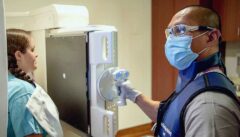Contents
The Demise Of Smile Direct Club

Smile Direct rose to prominence around 2016 and by 2019, successfully floated at $23 per share. Those shares are now worthless and the company is in bankruptcy.
A list of issues along the path they followed could be raised, an expensive legal spat with a former partner, a cyber attack, a workplace shooting.
There is however the larger question of whether investors ever stood a chance. Whether they were drawn into an investment that looked like the future but in reality, could never succeed.
The Business Model
People can be frustrated by the cost of orthodontic care, the younger generation in particular. Affordability would be welcome, all the better if convenience were thrown in.
Smile Direct decided to solve the problem through a largely online service. Offering patients plastic aligners based on an impression from an at home moulding kit, or a 3D-scan in some cases.
They claimed specialist supervision but the BDA believe that just 5 registered dentists were involved in the care of 65,000 UK patients, not very practical.
No doubt a proportion of people were helped but this may not be lasting and a fair number felt their needs were not met, or they had been harmed.
Managing reputation damage became a major activity for Smile Direct, as did overspend on advertising to try to compensate. At one stage, 50% of income was being spent on marketing.
The company appear never to have made a profit and were slated at various stages by investment advisers. One leading investment research company described them as:
“A case study in why it’s a bad idea to invest in a company that attempts to fit a complex, dangerous medical process onto a low cost, high volume assembly line”.
Real World Orthodontics
Orthodontics may have looked simple to Smile Direct but is a complex, individual process. An in person consultation and full diagnosis of any dental, or oral issues are essential.
The BDA’s overview of Smile Direct found cases with advanced gum disease, where aligners could have led to tooth loss. A number of other issues with their treatment have been reported.
They could have been under reported. For a long while, Smile Direct obliged unhappy customers to sign non disclosure agreements to get a refund.
As a leading oral & maxillofacial clinic, with an attached orthodontic practice, we feel able to express a view. The Smile Direct approach and a world full of unique people were not a good match.
The Question Of Remote Care
Remote medical support, often called telemedicine, has existed for some while but rushed to the fore during the Covid pandemic in 2020. A viable way to maintain isolation and offer care.
Many felt this would be the future, even when the pandemic was over and for elements of support this is reasonable. In terms of wider care, take up has fallen in almost every area since that time.
Patients would rather see a doctor than have a video call. They rightly feel that subtle interaction within a face to face consultation leaves them better informed and offers their practitioner greater insight.
The Future Of Orthodontics
Technology has advanced, messy casts replaced by laser scans, which are sent immediately to a braces provider. At specialist clinics, in practice CT scanners can offer a more incisive view than x-rays.
What technology can not replace is the decade taken to become an orthodontist, or the next decade gaining experience and rising through the profession. The level of understanding and support they bring.
In some ways, we wouldn’t have minded if Smile Direct had worked. We do understand the wish for convenience, or affordability and across much of the globe, orthodontic care is hard to find.
The reality is that the appointments and professional knowledge exist because they are needed. Effective orthodontic care can not escape cost but can save unwanted cost in times to come.
21 September 2024



